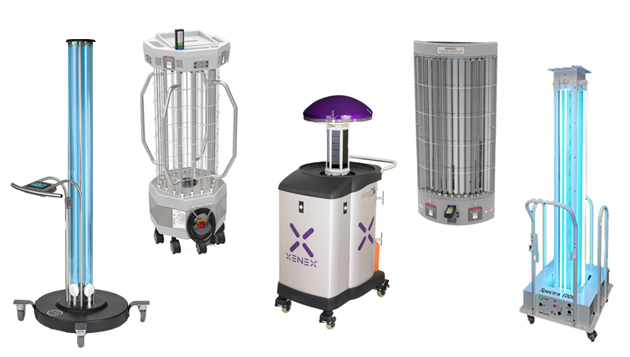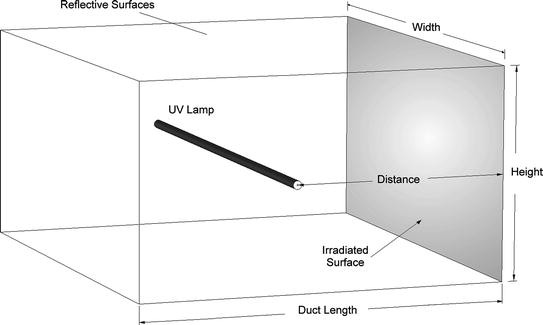Discover the Advantages of UV Surface Disinfection: Efficient and Eco-Friendly Hygiene
Discover the Advantages of UV Surface Disinfection: Efficient and Eco-Friendly Hygiene
Blog Article
UV Sanitation: The Cutting-Edge Innovation Changing Hygiene Practices
In the realm of hygiene methods, one innovation has actually emerged as a game-changer: UV sanitation. From health care settings to food handling, UV disinfection is making its mark in various sectors.
How UV Disinfection Works
UV disinfection works by utilizing ultraviolet light to damage or suspend bacteria, supplying a chemical-free and very effective approach of sanitation. This modern technology uses the power of short-wavelength UV-C light, which can damaging the DNA and RNA of microorganisms, therefore making them incapable to reproduce and cause damage.
The process begins with the installment of UV disinfection systems, which are composed of UV lights that emit UV-C light. These lamps are tactically placed in locations where microbial contamination is an issue, such as water treatment plants, health centers, laboratories, and food handling centers.
When microbes are revealed to UV-C light, the photons permeate their cell wall surfaces and reach the DNA and RNA within. The high-energy UV-C photons disrupt the hereditary material by producing bonds between nearby nucleotides, resulting in the formation of thymine dimers. These dimers avoid the microbes from reproducing, providing them harmless.
UV disinfection is very reliable against a vast array of bacteria, consisting of bloodsuckers, microorganisms, and viruses. It is especially efficient versus waterborne microorganisms like E. coli, Giardia, and Cryptosporidium. Moreover, UV sanitation is a chemical-free method, getting rid of the need for potentially harmful anti-bacterials and lowering the risk of damaging disinfection by-products.
Benefits of UV Sanitation
UV sanitation supplies various benefits in the field of hygiene, making it a very liked method for properly eliminating dangerous microbes. Unlike traditional sanitation methods that depend on chemicals, UV disinfection uses ultraviolet light to destroy the DNA of bacteria, rendering them not able to recreate and cause infections.

UV disinfection is also highly versatile in its applications. It can be made use of in various settings, consisting of healthcare facilities, schools, food handling facilities, and water therapy plants. UV disinfection systems can be quickly incorporated right into existing hygiene practices, supplying an additional layer of protection versus infectious diseases.
Along with its effectiveness and versatility, UV disinfection is likewise eco-friendly. It does not generate any hazardous byproducts or deposits, making it a lasting and risk-free method for cleanliness - uv surface disinfection. In addition, UV sanitation calls for very little maintenance and has a lengthy lifespan, causing price savings over time.
UV Sanitation in Medical Care Setups
In healthcare setups, UV disinfection has actually become a groundbreaking technique for properly eliminating unsafe microbes. The use of UV light to disinfect surfaces and devices has gained popularity due to its capacity to give an extra layer of security against virus. UV disinfection functions by sending out ultraviolet light at a specific wavelength that is dangerous to microorganisms, infections, and other microbes. This modern technology offers a number of benefits in health care settings.
Firstly, UV sanitation is a non-chemical approach, making it an eco-friendly choice contrasted to typical sanitation methods that commonly include using rough chemicals. Using UV light removes the requirement for chemical disinfectants, lowering the danger of harmful residue or chemical direct exposure to both people and health care employees.
Furthermore, UV sanitation is very effective in killing a variety of microbes, consisting of drug-resistant germs such as MRSA and C. difficile. It provides a regular and reliable disinfection process, making sure that all surfaces and tools are extensively decontaminated, even in hard-to-reach locations.

UV Disinfection in Food Handling
The application of UV disinfection extends beyond medical care setups and discovers significant value in the world of food processing. uv surface disinfection. UV disinfection innovation is coming to be progressively preferred in the food market due to its capability visit here to successfully get rid of damaging virus and boost food safety
One of the primary benefits of UV disinfection in food handling is its capacity to target a wide variety of bacteria, consisting of viruses, mold and mildews, and germs. By using UV light at particular wavelengths, it is possible to interrupt the DNA and RNA of these microorganisms, rendering them incapable to reproduce or cause harm. This modern technology can be related to numerous stages of the food handling chain, including surface sanitation, equipment sterilization, and water treatment.
UV sanitation offers a chemical-free and non-thermal approach of disinfecting food products. Unlike traditional disinfection approaches that count on chemicals or heat, UV modern technology does not leave any type of residue or change the preference, appearance, or nutritional worth of the food. This makes it an optimal option for industries that call for strict adherence to quality requirements.
Furthermore, UV disinfection systems are simple to set up and run, requiring marginal upkeep. They can be integrated into existing processing lines without creating substantial interruptions to the manufacturing process. Furthermore, UV systems have a fast therapy time, enabling continual processing and lowering downtime.
The Future of UV Disinfection

One area where UV Get More Information disinfection is anticipated to make considerable improvements is in the field of health care. With the rise of antibiotic-resistant bacteria and the requirement for a lot more effective sanitation techniques, UV light has the possible to play an essential function in reducing healthcare-associated infections. UV disinfection systems can be made use of to decontaminate surfaces, tools, and even the air in health care centers, aiding to stop the spread of unsafe microorganisms and boost person safety.
Another sector that can profit from innovations in UV disinfection innovation is the food sector. UV light has currently proven to be a reliable method for sanitizing food products and reducing the danger of foodborne health problems. As modern technology boosts, we can expect to see more cost-efficient and efficient UV disinfection systems being implemented in food handling plants, ensuring that the food we take in is risk-free and without hazardous microorganisms.
Conclusion
Finally, UV sanitation is a sophisticated modern technology that is transforming hygiene methods in health care setups and food processing. By making use of UV light to kill or deactivate microbes, it provides various benefits such as safety, effectiveness, and efficiency. With recurring developments in this field, UV disinfection holds fantastic prospective for the future of cleanliness, giving a dependable and lasting option for keeping clean and sanitary atmospheres.
UV sanitation is a chemical-free approach, removing the requirement for possibly dangerous anti-bacterials and reducing the risk of harmful disinfection spin-offs.
Unlike conventional sanitation approaches that depend on chemicals, UV sanitation uses ultraviolet light to ruin the DNA of microorganisms, making them not able to duplicate and cause infections. Unlike standard sanitation approaches that depend on chemicals or heat, UV innovation does not leave any residue or change the taste, texture, or nutritional value of the food. As technology boosts, we can anticipate to see more reliable and cost-effective UV sanitation systems being implemented in food handling plants, making sure that the food we eat is secure and free from unsafe microorganisms.
In final thought, UV disinfection is a sophisticated technology that is changing hygiene techniques in medical care settings and food handling.
Report this page